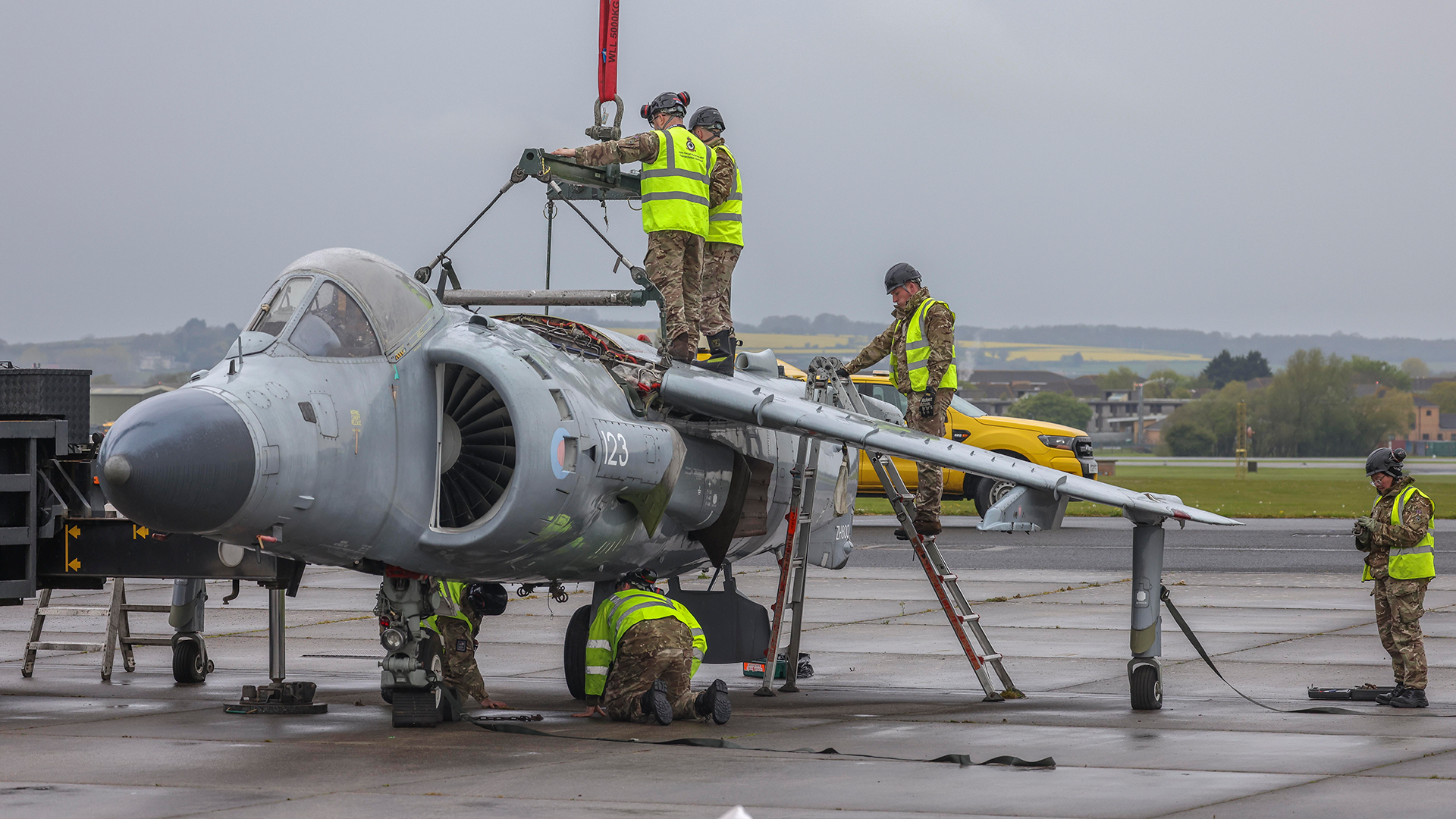Iconic Royal Navy aircraft embark on 8,000-mile journey to make Falklands museum home
Two iconic Royal Navy aircraft are embarking on an 8,000-mile journey to become the centrepieces of a museum in the Falklands.
A retired Sea Harrier jump jet and Lynx helicopter are being transferred to the South Atlantic as part of a new exhibition dedicated to the liberation of the Falkland Islands from Argentine rule in 1982.
The capital Stanley is gearing up to expand its existing gallery by adding a new hall for larger exhibits – including the two veteran aircraft.
However, neither aircraft can make the journey by air, leaving sea transportation as the sole viable option.
The Joint Aircraft Recovery and Transportation Squadron (JARTS), a combined RN-RAF unit based at Boscombe Down in Wiltshire, was entrusted with the delicate task of disassembling the Harrier and transporting the special load from RNAS Yeovilton in Somerset back to their home.
Overseeing the move for JARTS is Chief Petty Officer Stewart Wright – a former Harrier engineer who maintained the aircraft at sea and on land, including tours of duty in Afghanistan.
"I began my carrier on Harriers, so the aircraft means a lot to me and I'm just glad to be able to deliver this one back to the Falklands where it means so much to them," he said.
"We went to the Falklands to prepare the move and it's evident how passionate the islanders are and how much the Sea Harrier means to them – it's a symbol of their freedom, so they are really keen to have one on display."
Lieutenant Commander Jason Flintham, a former jump jet pilot who now assesses Royal Navy aircrews, emphasised the significance of the Harrier's presence in the Falklands.
He said: "It's amazing – and right – that there should be a Harrier in the Falklands. It will serve as a testament to those who flew it and a memorial to those who did not return.
"The Harrier is of huge historical importance to the islands and I'm proud that this one is going down there for all to see."
The final Sea Harriers were retired by the Royal Navy in 2006 after more than a quarter of a century of service.
Lynx XZ725 saw action in the Falklands – and served with distinction until the end of its active life.
During the Falklands War, the Lynx, alongside the Westland Wessex and the Westland Wasp helicopters, was involved in what is thought to be the first successful anti-submarine exercise carried out entirely by helicopters.
HMS Antrim's Westland Wessex helicopter, known as Humphrey, spotted an Argentinian submarine named Santa Fe during a pre-dawn surface. Humphrey swiftly launched an attack, and inflicted damage on the submarine, prompting it to hastily retreat.
A Westland Lynx helicopter from HMS Brilliant and a Westland Wasp from frigate HMS Plymouth also joined the attack, as did the Wasp aircraft from ice patrol ship HMS Endurance.
Despite sustaining damage, Santa Fe returned to the pier while exchanging fire with the British helicopters.

Both the Sea Harrier jump jet and the Lynx helicopter, after being prepared at Boscombe Down, were moved to Marchwood Military Port in Southampton Water for loading onto a Falklands-bound supply ship.
Anticipation is high as they are expected to arrive in time for the Liberation Day events in June.
However, they will be kept in storage until the new exhibition hall is completed, with plans for the hall to open to the public in the spring of 2025.
Despite the Falklands' modest population, the museum garners significant attention, attracting around 80,000 visitors annually, a number expected to rise due to increased trade from cruise liners.
With the addition of these iconic aircraft, the museum is set to become an even more compelling destination for history enthusiasts and visitors alike.









